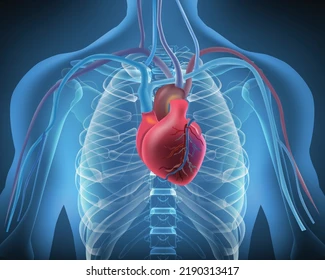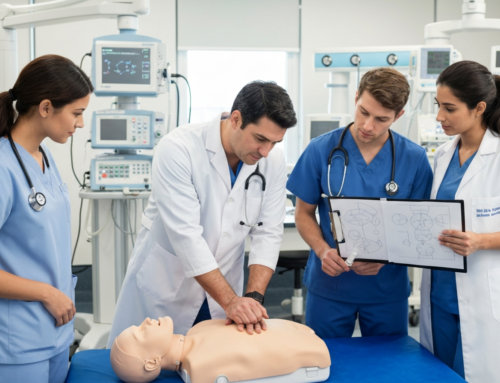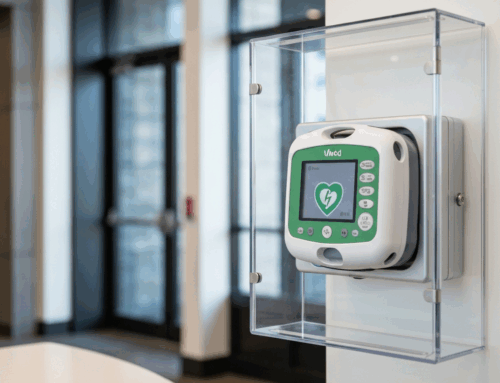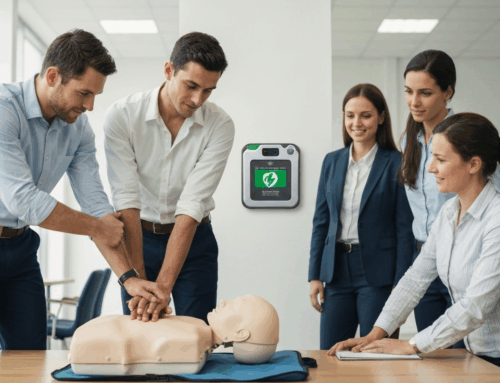This week we’re going to be exploring Heart Function: Arrhythmias, and ACLS
As the hub of the circulatory system, the heart pumps blood, delivers nutrition and oxygen, and eliminates waste products from metabolism, such as carbon dioxide. It is located under the sternum, somewhat to the left, and is enclosed in the pericardium. The atria and ventricles comprise the two chambers of the heart. Blood is pumped from the ventricles to the body’s lungs via the atria. One-way valves guarantee appropriate blood flow via these chambers.
Blood moves in two primary directions. The superior and inferior vena cava carry the body’s deoxygenated blood back to the right atrium. After entering the right ventricle, it is pushed via the pulmonary artery to the lungs, where it is oxygenated. The pulmonary veins carry oxygen-rich blood from the lungs to the left atrium, which enters the left ventricle and is pumped to the rest of the body via the aorta. The muscle walls of the heart, especially the left ventricle, must contract with sufficient force to circulate oxygen-rich blood throughout the body.
Coronary veins return deoxygenated blood from the heart muscle to the right atrium, while coronary arteries supply the heart by branching off the aorta. The heart’s electrical system beats roughly 70–80 beats per minute, mainly managed by the sinoatrial (SA) node. The atrioventricular (AV) node ensures that electrical impulses reach the ventricles, synchronizing a heartbeat. At the same time, this node—also referred to as the heart’s pacemaker—causes the contraction of both atria.
At an average heart rate, the cardiac cycle, which consists of the contraction (systole) and relaxation (diastole) phases, lasts roughly 0.8 seconds. The normal range for a healthy adult’s resting heart rate is 60–100 beats per minute; children’s rates are more significant. Arrhythmias, or irregular heartbeats, are caused by disruptions in the electrical signals of the heart and can result in life-threatening disorders such as fibrillation and ventricular tachycardia. When dealing with severe arrhythmias, prompt medical attention—including defibrillation—is crucial to restoring normal cardiac function.
Globally, cardiovascular illnesses, such as coronary heart disease (CHD), are the primary causes of mortality. When plaques, or fatty deposits, accumulate in the coronary arteries, they can narrow them and cause coronary heart disease (CHD). If the blood supply is completely cut off, this illness may result in heart attacks in addition to chest pain (angina). Obesity, smoking, high cholesterol, and hypertension are risk factors for coronary heart disease.
Advanced Cardiovascular Life Support (ACLS) is required to treat life-threatening cardiac events such as severe arrhythmias, cardiac arrest, and heart attacks. Advanced Cardiovascular Life Support (ACLS) equips medical workers with advanced capabilities such as defibrillator use, drug administration, and airway management for heart function restoration. ACLS is an essential intervention during cardiac events because it provides better survival and recovery outcomes when used promptly in situations such as ventricular fibrillation.
Learn how to do basic ALS with us! Register for your class [Here]
CHARLOTTE MARKET
- Charlotte
- Rock Hill
- Gastonia
- Concord
- Cornelius
- Monroe
- Harrisburg
- Matthews
- Mint Hill
- Fort Mill
- Indian Land
- Kannapolis
- Belmont
WILMINGTON MARKET
- Wilmington
- Jacksonville
- Shallotte
- Carolina Beach
- Surf City
- Hampstead
- Sneads Ferry
- Leland
- Southport
GREENSBORO MARKET
- Greensboro
- High Point
- Hickory
COLUMBIA MARKET
- Columbia
- Florence
MYRTLE BEACH MARKET
- Myrtle Beach
- North Myrtle Beach
- Surfside Beach
- Myrrells Inlet
- Conway
- Ocean Isle Beach







Leave A Comment